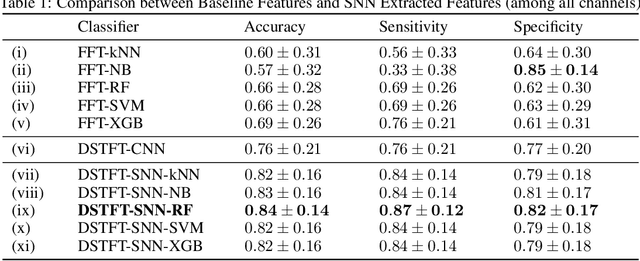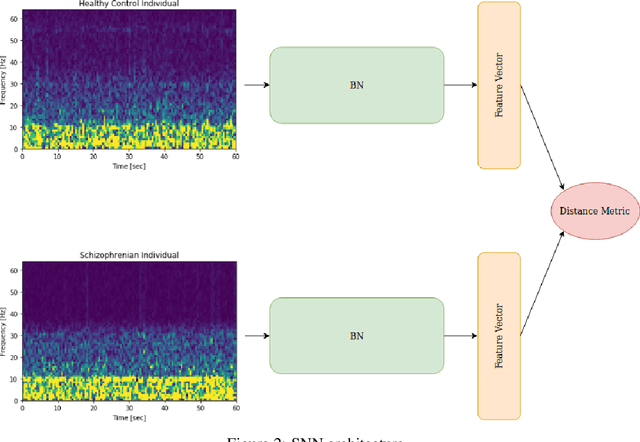On the use of Pairwise Distance Learning for Brain Signal Classification with Limited Observations
Paper and Code
Jun 05, 2019



The increasing access to brain signal data using electroencephalography creates new opportunities to study electrophysiological brain activity and perform ambulatory diagnoses of neuronal diseases. This work proposes a pairwise distance learning approach for Schizophrenia classification relying on the spectral properties of the signal. Given the limited number of observations (i.e. the case and/or control individuals) in clinical trials, we propose a Siamese neural network architecture to learn a discriminative feature space from pairwise combinations of observations per channel. In this way, the multivariate order of the signal is used as a form of data augmentation, further supporting the network generalization ability. Convolutional layers with parameters learned under a cosine contrastive loss are proposed to adequately explore spectral images derived from the brain signal. Results on a case-control population show that the features extracted using the proposed neural network lead to an improved Schizophrenia diagnosis (+10pp in accuracy and sensitivity) against spectral features, thus suggesting the existence of non-trivial, discriminative electrophysiological brain patterns.
 Add to Chrome
Add to Chrome Add to Firefox
Add to Firefox Add to Edge
Add to Edge